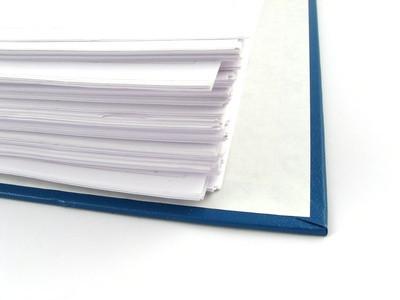-
Cómo convertir HTML a PDF utilizando iTextSharp
-

iTextSharp es parte del código abierto biblioteca de Java iText para la generación de PDF escrito en C # para la plataforma .NET. Archivos PDF son documentos que se utilizan con frecuencia para proporcionar sitio web de contenido imprimible de tamaño fijo.Instrucciones
1 Abra un editor de C #.
2 Crear un archivo de C # y agregue el código siguiente.
3 Utilizar un espacio de nombres para llamar a la biblioteca iTextSharp:
utilizando iTextSharp.text;
utilizando iTextSharp.text.pdf;
4 Llamar a una clase A integrado en iTextSharp y establecer el StringBuilder para vaciar:
documento Documento nuevo Documento = (PageSize.A4, 80, 50, 30, 65);
StringBuilder strData = new StringBuilder (String.Empty);
5 Añadir un camino para el HTML que se genera a partir de contenidos GridView:
cadena strHTMLpath = Server.MapPath ( "MyHTML.html");
6 Establecer la ruta para el archivo PDF para construir:
cadena strPDFpath = Server.MapPath ( "MyPDF.pdf");
7 Llame a los datos del archivo HTML y procesar el archivo:
StringWriter sw = new StringWriter ();
sw.WriteLine (Environment.NewLine);
sw.WriteLine (Environment.NewLine);
sw.WriteLine (Environment.NewLine);
sw.WriteLine (Environment.NewLine);
HtmlTextWriter htw = new HtmlTextWriter (SW);
gvSerchResult.AllowPaging = false;
gvSerchResult.AllowSorting = false;
BindGridView ();
gvSerchResult.RenderControl (HTW);
StreamWriter strWriter = nuevo StreamWriter (strHTMLpath, falsa, Encoding.UTF8);
strWriter.Write ( "<html> <head> </ head> <body>" + htw.InnerWriter.ToString () + "</ body> </ html>");
strWriter.Close ();
strWriter.Dispose ();
8 Utilice el analizador para convertir el contenido HTML a PDF:
iTextSharp.text.html.simpleparser.
estilos StyleSheet = new iTextSharp.text.html.simpleparser.StyleSheet ();
styles.LoadTagStyle ( "ol", "líder", "16,0");
PdfWriter.GetInstance (documento, nuevo FileStream (strPDFpath, FileMode.Create));
document.Open ();
9 Establecer los estilos de fuente para los elementos de la página y añadir los elementos de página:
objetos ArrayList;
styles.LoadTagStyle ( "li", "cara", "Garamond");
styles.LoadTagStyle ( "span", "tamaño", "8 píxeles");
styles.LoadTagStyle ( "cuerpo", "font-family", "Times New Roman");
styles.LoadTagStyle ( "cuerpo", "font-size", "12px");
document.NewPage ();
objetos = iTextSharp.text.html.simpleparser.
HTMLWorker.ParseToList (nuevo StreamReader (strHTMLpath, Encoding.Default), estilos);
for (int k = 0; k <objects.Count; k ++)
{
document.Add ((IElement) objetos [k]);
}
10 Borrar todas las variables utilizadas en la memoria y cierre:
{
document.close ();
Response.Write (Server.MapPath ( "~ /" + strPDFpath));
Response.ClearContent ();
Response.ClearHeaders ();
Response.AddHeader ( "Content-Disposition", "apego; nombre de archivo =" + strPDFpath);
Response.ContentType = "application / octet-stream";
Response.WriteFile (Server.MapPath ( "~ /" + strPDFpath));
Response.Flush ();
Response.Close ();
si (File.Exists (Server.MapPath ( "~ /" + strPDFpath)))
{
File.Delete (Server.MapPath ( "~ /" + strPDFpath));
}
}
11 Ejecute el archivo de C # para crear el archivo PDF en el archivo HTML.
